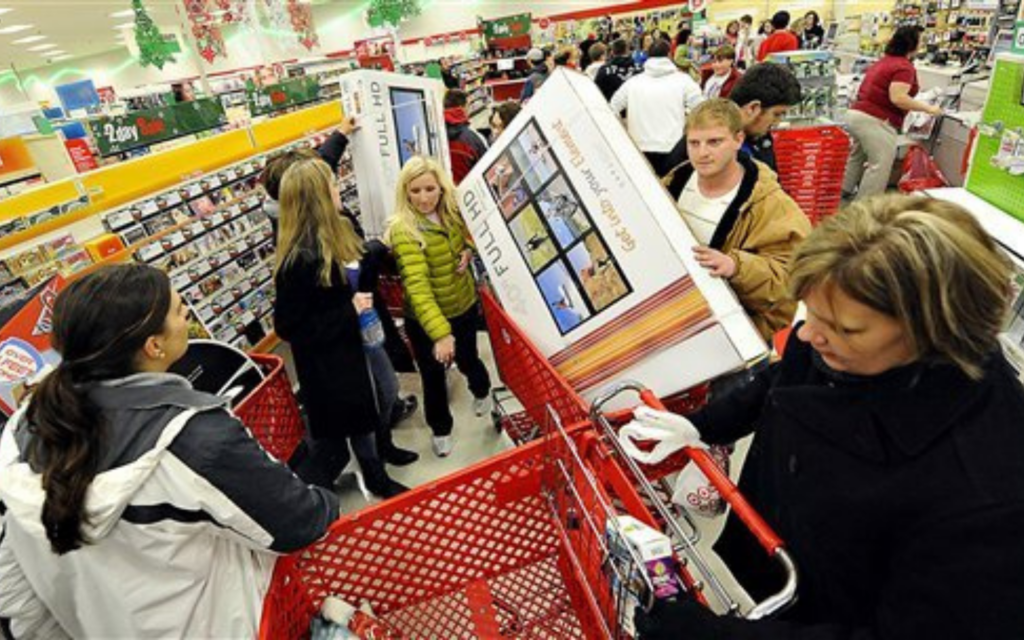The U.S. Just Recorded Its Highest Consumer Price Jump in 40 Years. But Relief Could Come Soon


In November, prices for U.S. customers rose 6.8% compared to the previous year. The rise in food, energy and housing costs caused Americans to experience their highest annual inflation rate ever since 1982.
Friday’s Labor Department report also revealed that prices increased 0.8% between October and November.
Inflation has put more pressure on consumers, especially those with lower incomes and need everyday necessities. It has also negated higher wages for many workers, made it difficult for the Federal Reserve to reduce its assistance for the economy, and coincided well with the flagging public support of President Joe Biden.
The rapid rebound from the pandemic crisis has fueled inflation with a mixture of factors: A flood government stimulus, ultralow Fed rates, and supply shortages at U.S. factories. Manufacturers have been slowed by heavier than- xpected customer demand, COVID-related shutdowns, and overwhelmed ports and freight yards.
Employers are facing worker shortages and have increased their pay. Many have raised prices to offset the higher labor costs. This has contributed to inflation.
This has led to price increases for all goods, including food, used vehicles, electronics, and household furnishings. As Americans stayed home to flood factories with orders for goods, the price explosion spread to other services such as apartment rents and meals at restaurants.
The Fed’s surprise at the persistence of high inflation is surprising. For months, Jerome Powell, Fed chair, considered inflation only “transitory,” a temporary consequence of bottlenecked supply channels. Powell signaled a shift two weeks ago, implicitly acknowledging how high inflation has survived longer than he had expected. Powell indicated that the Fed might act faster than initially planned to end its ultra-low-rate policies.
Economists hope that inflation will reach its peak in the coming months before gradually decreasing and relieving consumers. They also note that there has been a slow improvement in the supply of specific industries. Higher energy costs will proceed to burden consumers in the months ahead, but Americans will likely be spared earlier forecasts that energy rates would reach record levels over the winter.
Oil prices have been decreasing modestly, resulting in slightly lower gasoline prices. AAA reports that a gallon is $3.38 per gallon, down from $3.42 last month.
More strikingly, natural gas prices are down nearly 40% from their seven-year peak in October. The bottom line is that, while heating costs for homes will rise significantly from last year’s levels of around $42 per month, they won’t go up as much as was expected.
A sharp drop in wheat and corn prices could also decrease food prices from their highs earlier this year.
Mark Wolfe stated that heating a house in winter will cost an average of $972. His group predicted lower than the $1,056 in October but still higher than what average $888 homeowners paid to heat their homes last year.
Energy prices have been falling for several reasons in recent weeks. Unseasonably warm temperatures have impacted natural gas futures. Additionally, the United States and many other major countries have agreed to reduce their oil reserves. The OPEC+ Oil cartel agreed to release more oil in January.
Plus, the emergence of the omicron coronavirus variant has renewed the possibility of more postponed or canceled travel as well as fewer restaurant meals and shopping trips. This would likely slow down consumer spending and could even restrain inflation.
Analysts warn, however, that unexpected developments like heavy winter storms with increased demand for energy could lead to energy prices spiking again.
Analysts warned that improving overall inflation pressures will only be possible if global supply chains are normalized. Senior White House officials stated that they believe that a variety of administration actions have helped reduce inflation pressures. These included boosting cargo processing from Los Angeles and Long Beach and releasing crude oil from the Petroleum Reserve.
Some economists outside the field have also begun to share this view.
A chief economist at Moody’s Analytics, Mark Zandi, said, “I believe November will be its worst, and moving forward, we will notice steady improvement.” “As COVID’s delta wave recedes, and supply chains repair themselves, production and shipments will improve.”
Zandi indicated that inflation would start improving with the December prices report. He also stated that annual inflation should be around 3% by the end of next year. This is close to the Fed’s 2% target.
The Fed is expected to announce, after its next meeting, an acceleration of its monthly bond purchases, despite persistently high inflation. The assets are intended to lower long-term borrowing costs.
The Fed would be able to increase its short-term key interest rate as soon as next year’s first half. This rate has been nearly zero since March 2020, when the coronavirus caused the economy to enter a deep recession.

